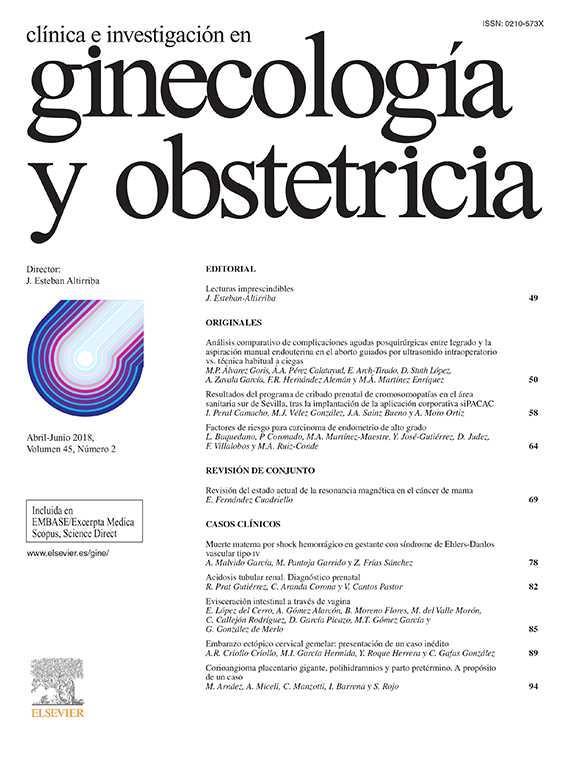Blepharophimosis-ptosis-epicanthus syndrome (BPES) is a rare genetic condition occurring sporadically and transmitted by autosomal dominant inheritance.
Type I BPES is associated with a high incidence of menstrual irregularities and infertility. Its clinical presentation is attributed to either ovarian resistance to gonadotrophins or to a true premature menopause. Two pathophysiological mechanisms are discussed. One suggests an initial process of inhibition of follicular development and an increase in the level of follicular atresia. The other hypothesis is a modification of genetic material situated independently on at least two different genes.
We report a familial case of BPES identified at birth, who required several surgical procedures. Several members of the patients family are also affected.
Genetic counselling is advised after diagnosis of BPES in a family. Women who are affected with this need adequate, early treatment to help with infertility.
El síndrome de blefarofimosis-ptosis-epicanto inverso (SBPEI) es una afección genética rara transmitida de manera dominante.
El SBPEI de tipo I está asociado con una incidencia elevada de alteraciones menstruales y con esterilidad. La sintomatología se atribuye a una resistencia ovárica a las gonadotropinas o a una verdadera menopausia precoz. Se discuten dos mecanismos fisiopatológicos:uno implica un proceso inicial de inhibición del desarrollo de los folículos y un aumento de la tasa de atresia folicular; la otra hipótesis es una modificación del material genético situado sobre al menos dos genes independientes.
Aportamos un caso familiar de SBPEI de tipo I objetivado en el nacimiento y operado en numerosas ocasiones. Otros miembros de la familia están igualmente afectados.
Tras el diagnóstico de SBPEI en una familia está indicado el consejo genético. En este síndrome, el único tratamiento adecuado es un abordaje temprano, para poder ayudar a las pacientes infértiles.






